Everyone loves butterflies because they’re beautiful—but did you know they’re also great pollinators?
Butterflies are very active and play an important role in our ecosystem in their quest for nectar, as they visit tons of flowers each day to fuel themselves (distributing pollen along the way).
You can attract these pretty flutterbys (as my family affectionately calls them) by growing their favorite nectar sources and providing safe places for them to land. They get food and rest, while you get color and beauty—a win all around. (Not to mention, a butterfly garden also appeals to other pollinator species like bees, hummingbirds, and beetles, and provides habitat for other insects and wildlife.)
Planning your butterfly sanctuary in spring is ideal, but it’s never too late to start adding a few elements here and there. Read on for seven easy ways you can create a butterfly garden that’s not only welcoming for adult butterflies, but moths and caterpillars too.
Disclosure: If you shop from my article or make a purchase through one of my links, I may receive commissions on some of the products I recommend.
1. Provide butterfly food.
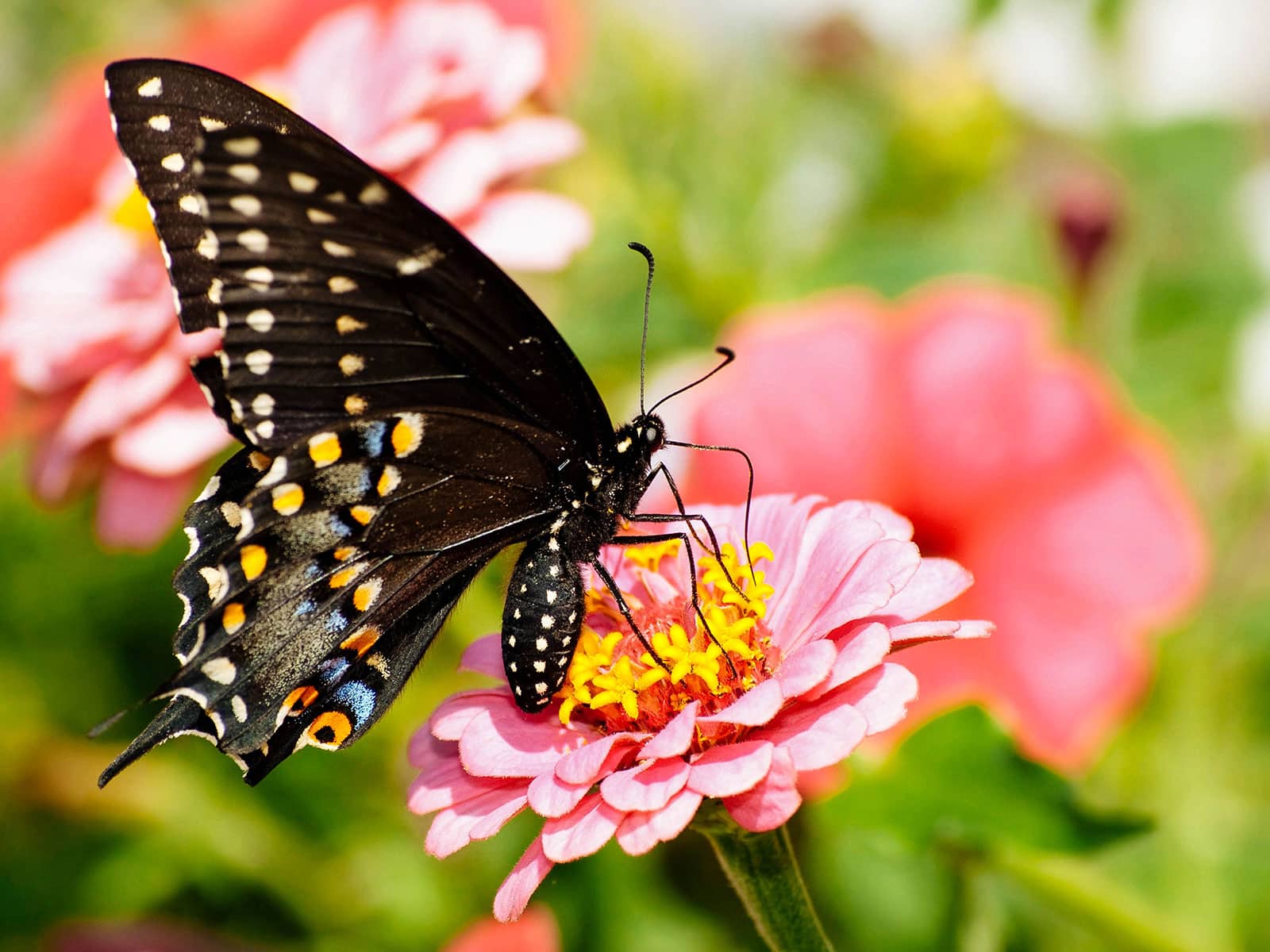
Unlike many species of moths, their close cousins, most butterflies need food in their adult stage. They feed on a variety of treats, from tree sap to dead animals, but their absolute favorite food in the world is nectar.
If you want to make your garden attractive to butterflies, plenty of flowers are a must. And while randomly planting flowers you like will certainly result in various species visiting your yard, you can really skyrocket their numbers by considering a few simple points:
- Butterflies tend to prefer brightly colored flowers: yellow, pink, purple, blue, red, orange. (Moths, on the other hand, like white and creamy hues.)
- Butterflies love flowers that grow in cluster and have flat tops for comfortable perching. (This is similar to the kinds of flowers bees prefer for easy access.)
- A variety of flower sizes ensures there’s something for both big and small butterflies.
- Butterflies can smell, and they usually prefer sweet-scented flowers. (Funky-smelling blooms are more attractive to flies and beetles.)
- Selectively bred, fancy or “complicated” flowers with lots of petals and layers are not ideal, as reaching their nectar is difficult.
Remember that flower preferences can vary by species. If you want to attract a certain type of butterfly, it can help to do a bit of research to figure out which types of flowers it usually goes for. Often, native butterflies will prefer specific native flowers.
Where to buy
Butterfly-friendly flowers
If I had to choose five flowers to plant for butterflies, I’d pick:
- Milkweed (Asclepias): It’s not just monarchs that adore milkweed. It ticks all the boxes for butterflies in general with its clustered, colorful flowers and sweet smell.
- Butterfly bush (Buddleja): Fragrant, colorful, and clustering (and hummingbirds happen to love these flowers too!). It can be invasive in some regions, however.
- Purple coneflower (Echinaea purpurea): The “cone” offers a nice big landing platform above the petals, oozing with tasty nectar.
- Common Lantana (Lantana camara): These multicolored, clustering flowers are practically a butterfly buffet.
- Zinnia: Avoid the multi-layered varieties (which make it hard for butterflies to access nectar) and go for a cultivar with a simpler shape instead. Planting a few different colors will attract not only butterflies, but other pollinators as well.
Quick Tip
Ensure sequential blooming. Or in normal English: Try to plant in such a way that there’s always something blooming in your garden, from the earliest hints of spring to deep into late fall. This way, there’s always something for your fluttering friends to eat. My favorite very early bloomer is the gorgeous purple Aubrieta, while my favorite late bloomers are Asters.
2. Provide caterpillar food.
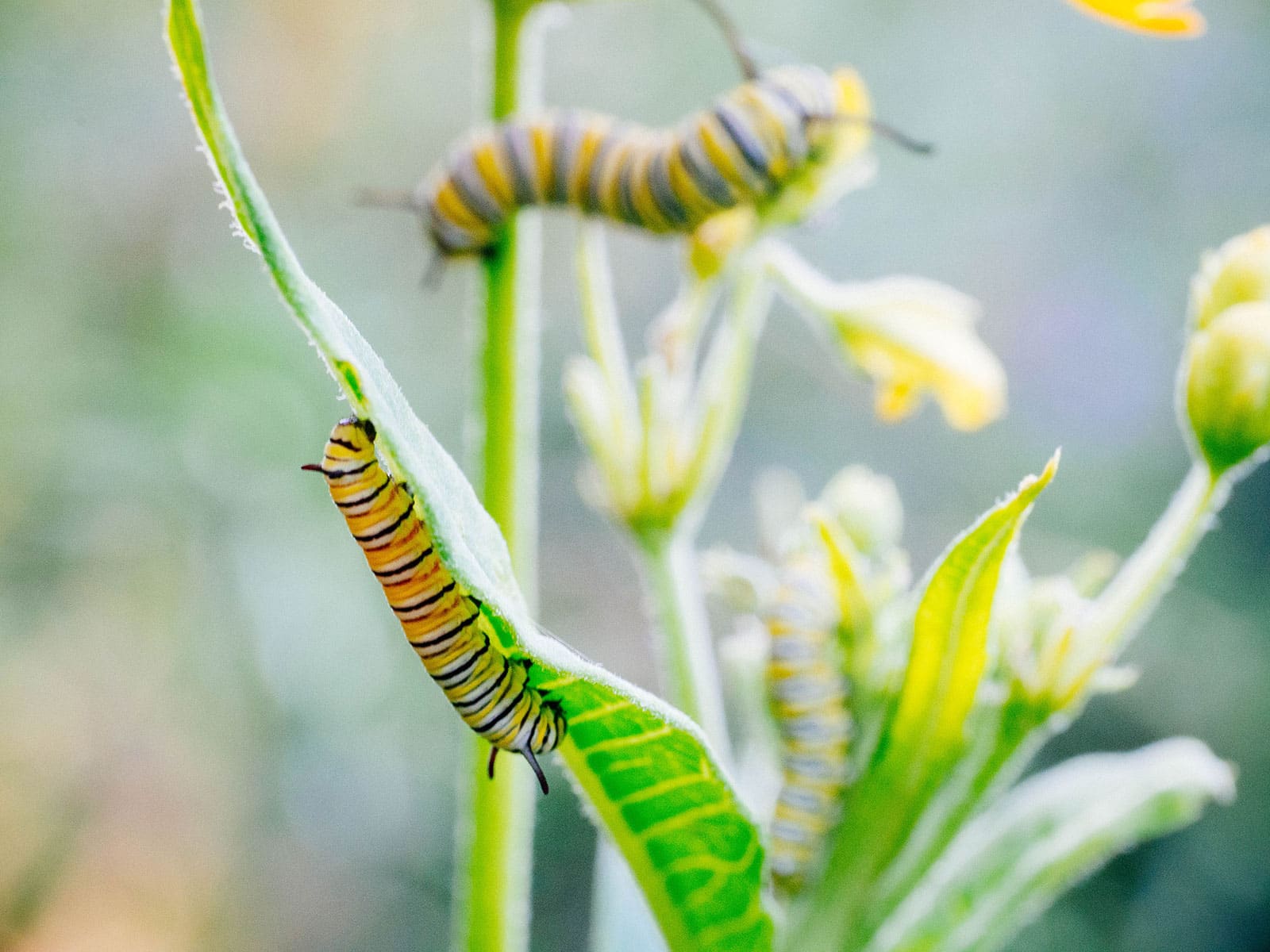
I know, I know… caterpillars just aren’t quite as cool as butterflies (although there are some really striking caterpillars out there!). I’ve had plenty of broccoli plants succumb to the voracious cabbageworm, so I know they aren’t always a welcome sight.
Related: A visual guide to identifying common green caterpillars in your garden
This being said… There are no butterflies without there first being caterpillars! So try to embrace them and give the caterpillars something to snack on that isn’t your beloved vegetable crop. You’ll attract adult butterflies this way as well, because after all, they’ll have to visit your garden to lay their eggs on the host plants you’ve so graciously provided.
Just as adult butterflies tend to have their favorite flowers, different caterpillar species can also have strong preferences when it comes to host plants. Some don’t care and eat pretty much anything, while others refuse to eat anything but a single plant species.
If I had to choose five plants to plant for caterpillars, I’d pick:
- Milkweed (Asclepias): The flowers attract monarch butterflies in their search for host plants to lay eggs. But it’s the leaves that are most important for monarch caterpillars, which feed exclusively on milkweed.
- Aster (Symphyotrichum): Late-blooming Asters burst onto the scene just as other flowers begin to fade, and the flowers and leaves are favored by both butterflies and caterpillars.
- Willow (Salix): Willows are fast-growing trees that add beauty to any yard, and they provide food for the larvae of iconic species like the mourning cloak, red-spotted purple, viceroy butterfly, and many more.
- Cherry, plum, almond (Prunus): Cherry, plum, and almond trees provide ample pollen and host a huge amount of butterflies, including American snout, swallowtail, red-spotted purple, coral hairstreak, spring/summer azure, viceroy, and more.
- Nettle (Urtica dioica): Beloved by the larvae of the red admiral, commas and question marks, Milbert’s tortoiseshell butterflies, and more. You can use false nettle (Boehmeria cylindrica) if you’re worried about the stinging hairs on true ones.
Read more: You can also grow fennel to attract swallowtail butterflies
3. Avoid pesticides.
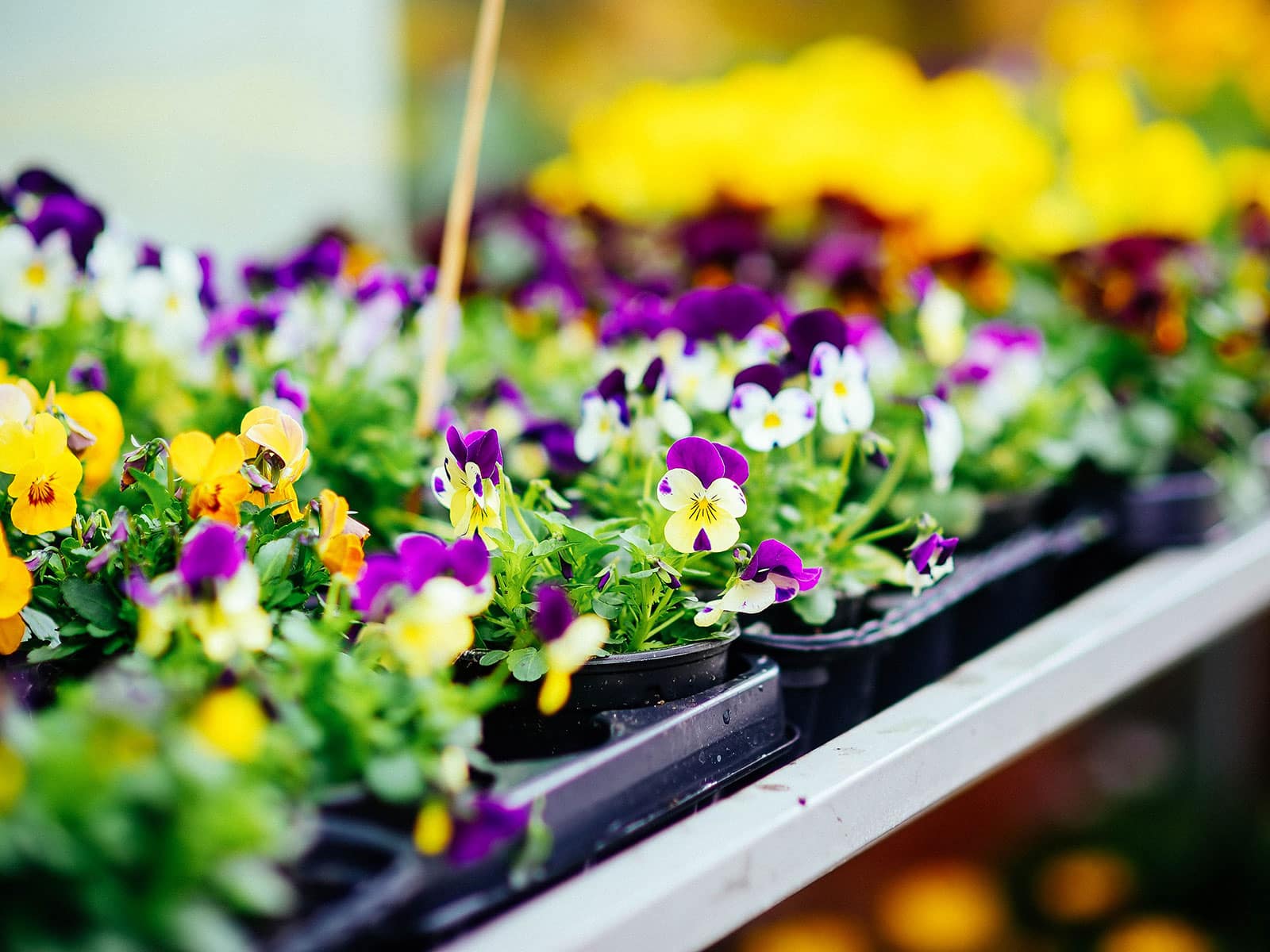
Environmental experts have been saying it for years: We really need to reduce our use of pesticides. They don’t just get the bad bugs (or the bugs we consider bad, anyway), but also wreak havoc on a variety of unintended victims. That especially includes pollinators like butterflies.
Try to buy garden plants that have been cultivated organically. Even residual traces can harm butterflies and caterpillars. Plants will absorb certain pesticides, which makes their leaves and nectar toxic to our fluttering friends and their offspring. If it doesn’t outright kill them, it can still cause deformities, meaning they won’t be able to reproduce normally and live out their full lifespans.
I know it’s frustrating when your crops or ornamental plants become infested by armies of pests, but there are “friendlier” ways to target them. If you’re going to wage war on bugs, do so by:
- Enouraging their natural predators (like ladybugs and lacewings, which you can attract with this special bug chow)
- Removing them with regular water blasts (an effective way to get rid of aphids)
- Hand-picking larger pests and disposing of them
- Using DIY traps or diatomaceous earth
- Sparingly using natural bacterial toxins or insecticidal soaps
- Promptly removing affected leaves or plants so pests don’t spread to healthy plants
4. Provide a mud puddle.
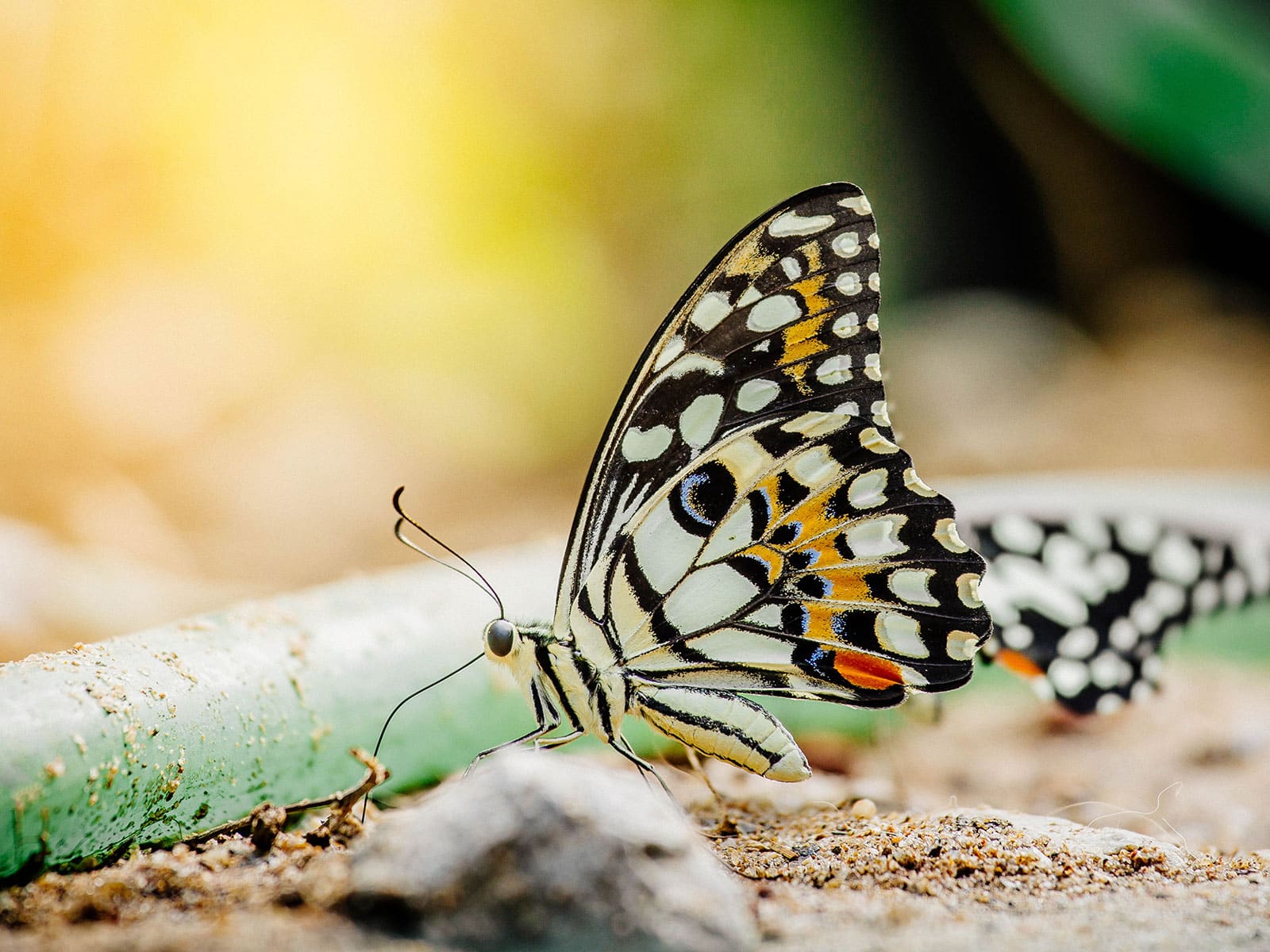
Putting out a dish of water with some rocks in it is a practice appreciated by bees, birds, and, indeed, butterflies.
But did you know there’s something butterflies like even more than plain ol’ H2O? Mud!
Mud puddling is a common behavior in butterflies, but not a simple one. It’s clear they do it in order to absorb dissolved nutrients like sodium. But what do they do with these nutrients?
Well, researchers have found that it’s mostly younger male butterflies doing the puddling. They’ve more or less come up with two hypotheses to explain it: either the puddlers need more nutrients because they spend more time flying around, or they seek them out in order to give them to their mates.
Yes, that’s right—male butterflies give females they mate with a neat package full of nutrients like sodium. Chivalry is alive and well.
Whatever the reason, butterflies like mud. So give them some!
- Take a shallow dish, fill it with some soil and/or sand, and then mix in a bit of water.
- Place a few rocks in it for perching and sprinkle some salt over the whole thing.
- Set the dish in the sun and wait for the first butterflies to appear. They recognize each other, so if one comes, the rest will follow.
5. Let the weeds grow.
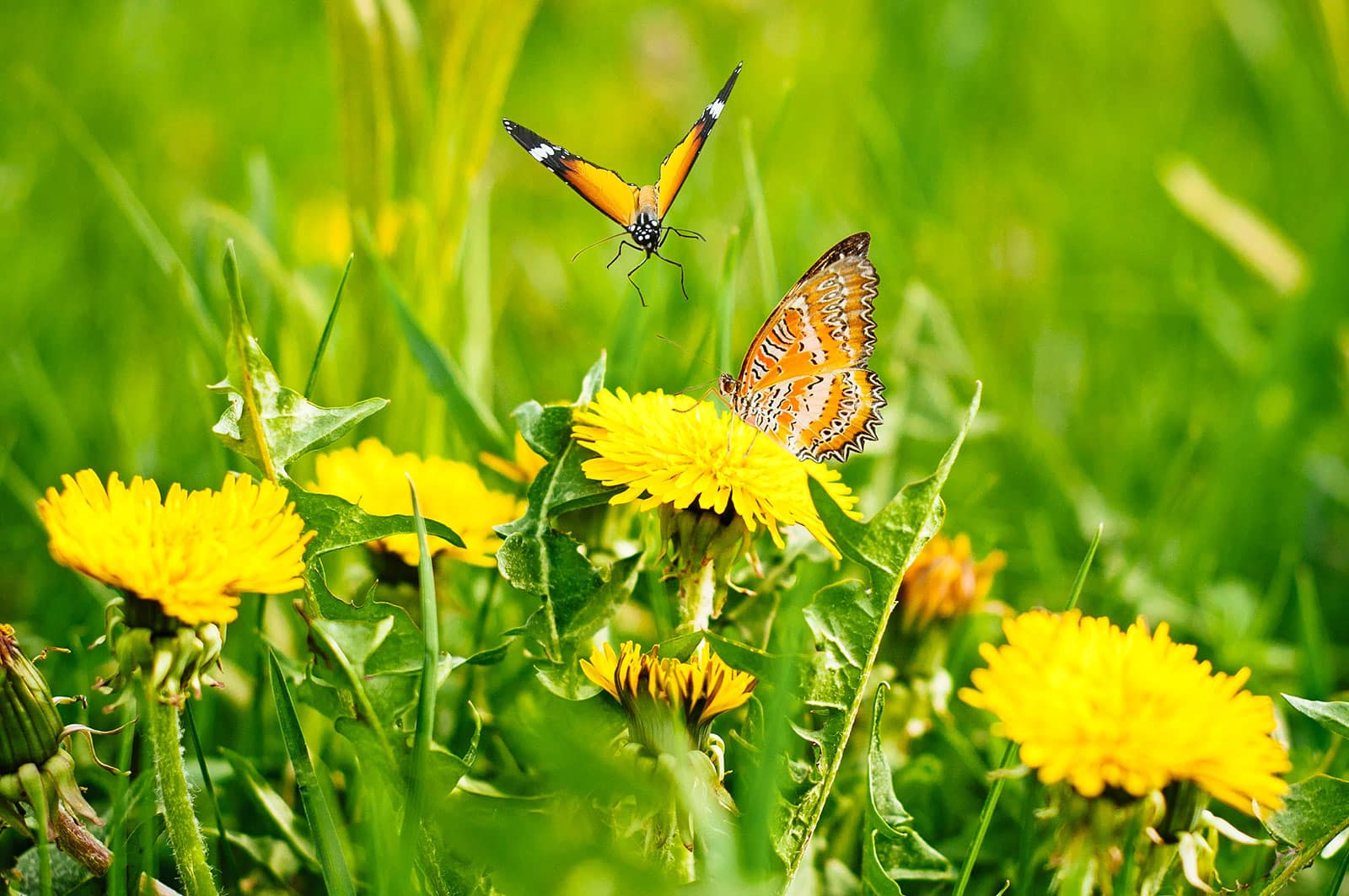
I know it’s tempting to keep your garden immaculately weeded, but if you want to attract butterflies, it might be a good idea to try… not doing that. Or at least not everywhere.
Some of the most persistent garden weeds are actually an important food source for butterflies and their spawn (especially in early spring when not much has bloomed yet). As I mentioned earlier, for example, the caterpillars of some butterflies feed almost exclusively on nettles—a plant considered noxious in some parts of the country.
Meanwhile, adult butterflies love the flowers of such weeds as dandelions, clovers, thistles, plantain, and more. Don’t deprive them of these valuable nectar plants! If you want to remove them, try waiting until they finish blooming, but do it before they go to seed and spread too much.
Quick Tip
Avoid keeping your garden too clean in general. Leaf litter and overgrown plants offer shelter for butterflies to pupate and overwinter. Your mini ecosystem will be more balanced if you allow things to run a little wild.
6. Provide basking spots.
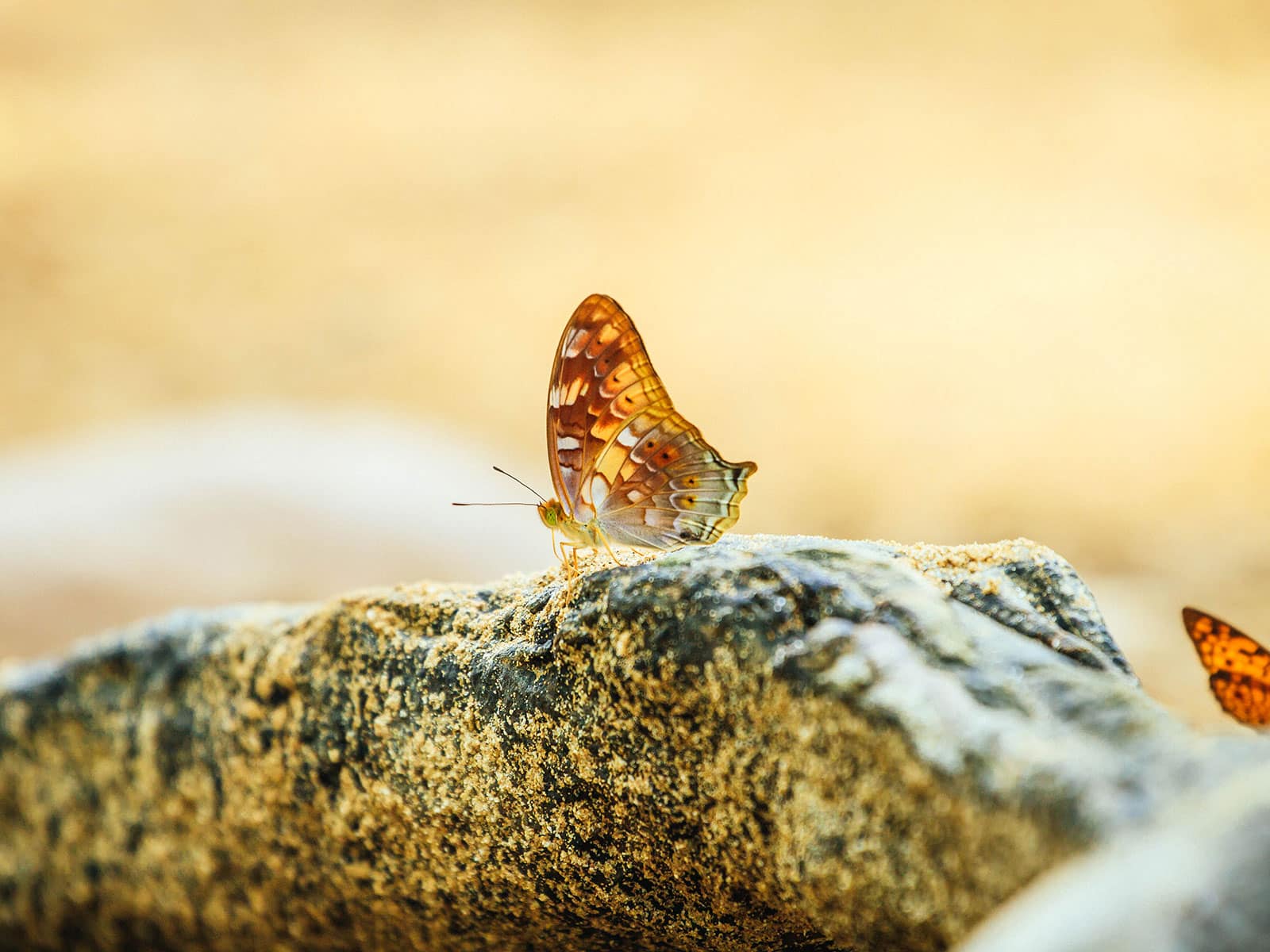
You know how, on those first spring days, you’ll often see butterflies sitting in the sunniest spot they can find with their wings open? This is because they’re cold-blooded and can’t regulate their own body temperature. They need to bask to even be able to fly!
So it’s no surprise that butterflies just love the sun, and you can support this behavior by offering your garden visitors a few nice basking spots. This doesn’t have to be anything complicated: a nice flat rock in a sunny spot will be much appreciated. Bonus points if you place it next to the mud puddle and a bed of nectar-rich flowers.
7. Leave some fruit out.
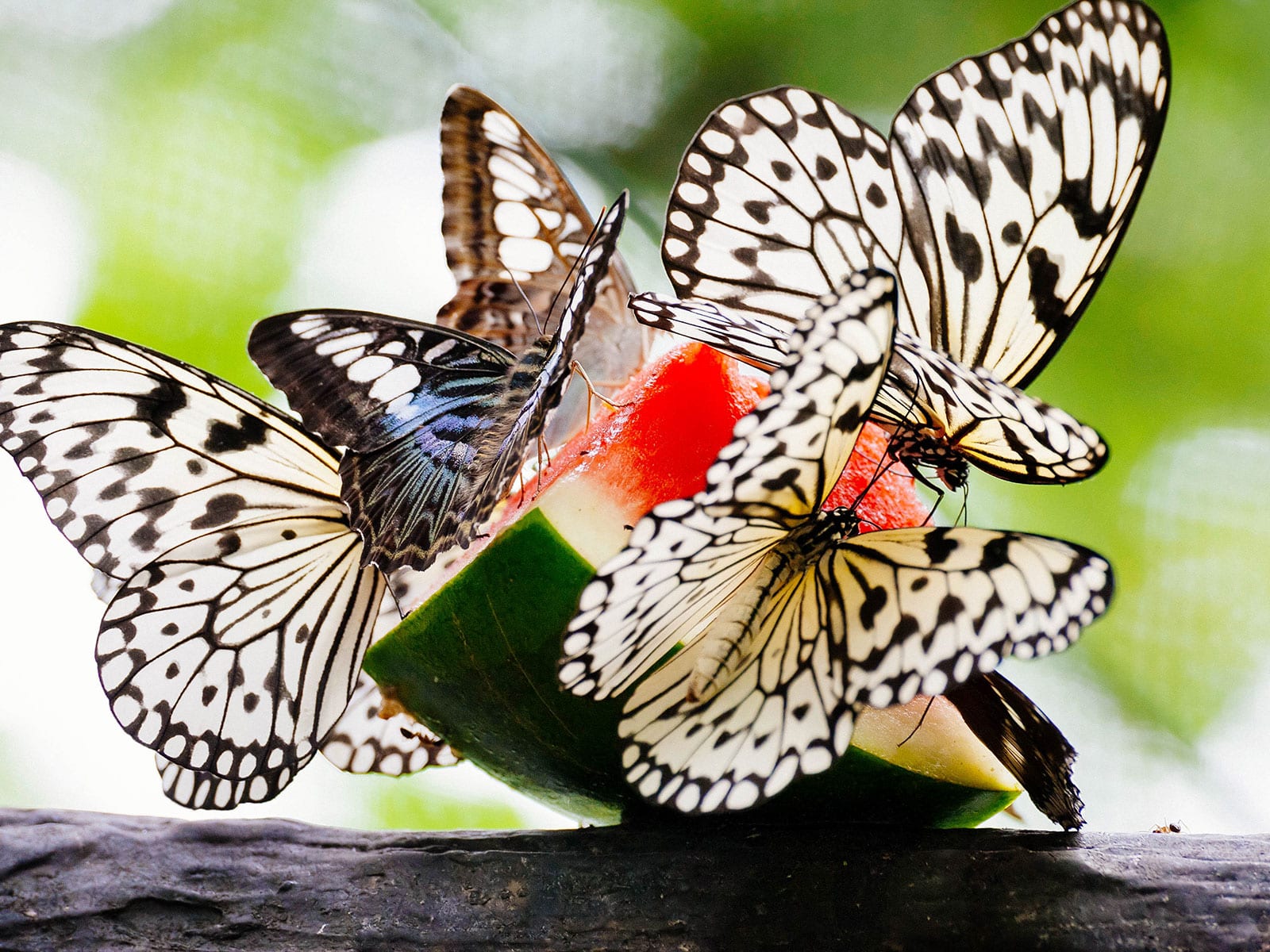
I’ve mentioned before that butterflies don’t just feed on nectar. Depending on the species, there are several other foods they will go for, which range from delicious-sounding to gross: (over)ripe fruits, tree sap, aphid honeydew, dung and urine, and even carrion.
Now, we’re not going to leave dead animals out in our gardens, even if they are a favorite food of some of the most iconic American butterflies (like the commas of the genus Polygonia). But we can do fruit!
If any of the fruit in your fruit basket or garden ends up going past its prime, don’t toss it. Slice it and place it outside on a plate or a special butterfly feeder. Pick a sunny but somewhat sheltered spot, preferably close to your flower beds so there’s a full buffet available.
You can leave the fruit out until it’s pretty mushy, but you should remove it if it gets moldy. It may be a good idea to discard it at night so you don’t accidentally throw a dinner party for mice, rats, and other unintended visitors.
Sources:
- Beck, J., Mühlenberg, E., & Fiedler, K. (1999). Mud-puddling behavior in tropical butterflies: in search of proteins or minerals?. Oecologia, 119, 140-148.
- Kinoshita, M., Stewart, F. J., & Ômura, H. (2017). Multisensory integration in Lepidoptera: insights into flower‐visitor interactions. BioEssays, 39(4), 1600086.
- Yurtsever, S., Okyar, Z., & Guler, N. (2010). What colour of flowers do Lepidoptera prefer for foraging?. Biologia, 65, 1049-1056.















